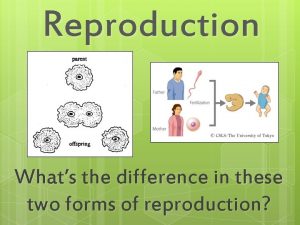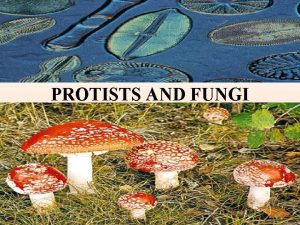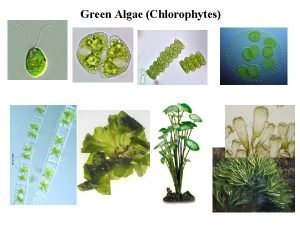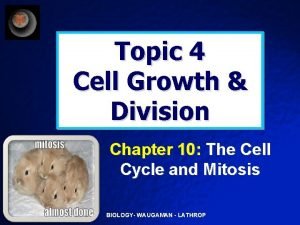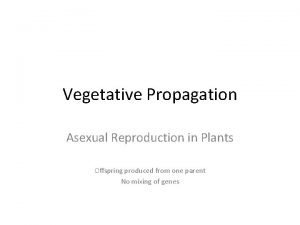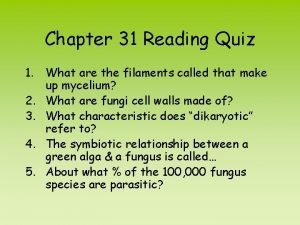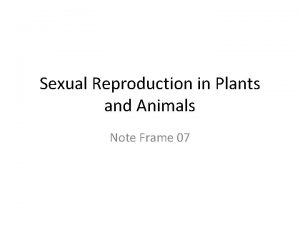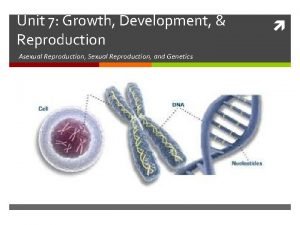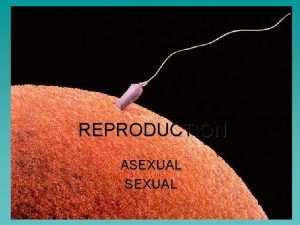Asexual Reproduction What is Asexual Reproduction Asexual reproduction


















- Slides: 18

Asexual Reproduction

What is Asexual Reproduction? • Asexual reproduction: Only one parent is required, and the offspring is a genetic copy to the parent, or a clone. • Can use Mitosis!

Types of Asexual Reproduction • Binary fission: One-celled prokaryotic organisms reproduce by replicating its genetic material and dividing into two. They have no organized nucleus, so this is simpler than mitosis. ** Mutations can still occur


Video on binary fission: • http: //www. youtube. com/watch? v=DY 9 DNWcqx. I 4

• Budding The organism develops an outgrowth or bud, which detaches from parents and becomes a new individual. This is common in some multicellular organisms, such as sponges and hydras, and some single-celled organisms such as yeast.


Video on budding:

• Fragmentation If an organism breaks apart as a result of injury, the new fragment develops as a clone of its parent, and the injury is healed on the parent as well. This happens to some animals and plants.



So far, we have seen: 1. 2. 3.

• Vegetative Reproduction In this type of division, special cells divide repeatedly to form structures that will eventually develop into a plant identical to the parent. Examples: Tulips, daffodils, and potatoes.




• Spore Formation Some organisms form single-celled spores in order to reproduce; these spores are carried out by water or wind, hoping to find a suitable location in order to grow. Examples of organisms that use spores are some fungi, such as mould and puffballs, and some bacteria.

Video on spores:
 Sexual reproduction vs asexual reproduction venn diagram
Sexual reproduction vs asexual reproduction venn diagram Asexualk
Asexualk Asexual vs sexual venn diagram
Asexual vs sexual venn diagram Asexual vs sexual reproduction venn diagram
Asexual vs sexual reproduction venn diagram Budding asexual reproduction
Budding asexual reproduction Whats asexual reproduction
Whats asexual reproduction Protists and fungi differences
Protists and fungi differences Comparison of mitosis and meiosis table
Comparison of mitosis and meiosis table Asexual reproduction
Asexual reproduction Green algae flagella
Green algae flagella Asexual reproduction of budding
Asexual reproduction of budding Vegetative propagation
Vegetative propagation Ascomycota asexual reproduction
Ascomycota asexual reproduction Chapter 19 asexual reproduction
Chapter 19 asexual reproduction Why is asexual reproduction beneficial
Why is asexual reproduction beneficial Where does cactus store water
Where does cactus store water Asexual reproduction
Asexual reproduction Sample example
Sample example Sexual or asexual reproduction
Sexual or asexual reproduction





